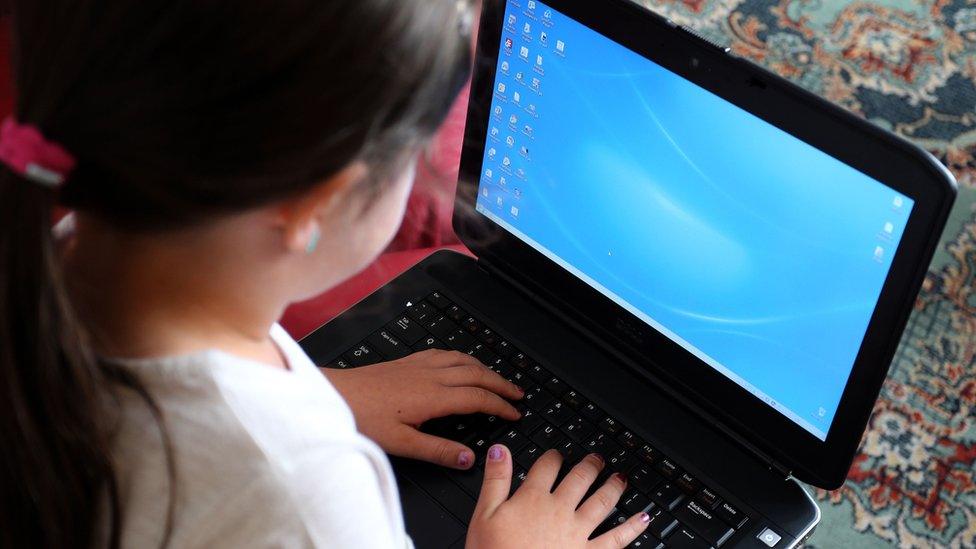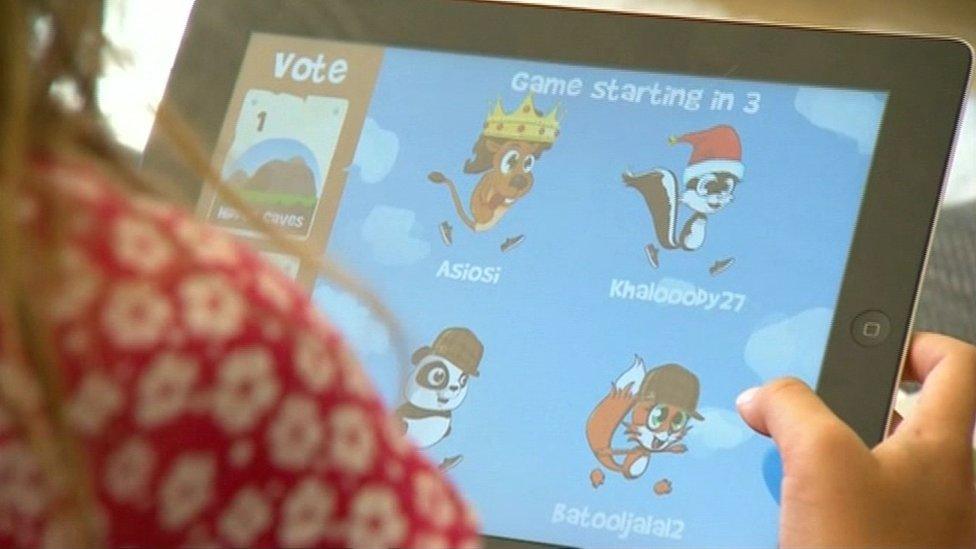Child safety online: Risks for children in NI 'need more research'
- Published

The strategy warned that lots of online safety features to protect children were outdated
Not enough is known about how much children and young people are at risk online in Northern Ireland.
That is according to a new online safety strategy for young people published by the Northern Ireland Executive.
It said more research and data collection was needed to understand the scale of the problem.
The strategy also said that a lot of restrictions on online access for children were "outdated".
In 2018, BBC News NI revealed that publication of the strategy had been delayed due to the collapse of the executive for three years and the lack of a health minister.
The National Children's Bureau had expressed concerns that children's online safety was being put at risk by the delay.
According to the just published document, the strategy aims to support and empower "children and young people to engage in online activities in an educated, safe, responsible and respectful way".
It said that while the online world had "opened up a new level of opportunity for children and young people", there were a number of risks to their safety.
These included exposure to pornography, abuse or information encouraging suicide or self-harm.
They were also at risk of things like grooming, harassment, sexting or cyberbullying.
Some young people who took part in a consultation for the strategy, however, felt their parents "over-exaggerated" the dangers.
"Parents are nervous as they don't know too much about [the internet] and because there has been a lot of stories like cyber-bullying," one said.
'Box-ticking exercise'
However, young people said that if they had concerns, they wanted them to be taken seriously.
But some teachers quoted in the document said there was "pretty much nothing in place" in their school to help children online.
"It is just a box-ticking exercise, it is just paperwork," one said.
"We tend to be reactive to specific issues so at the moment there would be huge things in our school around Snapchat," another said.
"But we are never prepared for it - it is always after the event, unfortunately."
The strategy document said there were a number of gaps in current information about online safety.
"Outside of official crime statistics, there is little regular data collected on either the scale of online-safety related incidents happening across NI, nor of the particular issues and concerns facing children, young people and parents or carers on a regular basis," it said.
"It is important to remember that the incidents which make the headlines, or appear as crime statistics are the exception; we know little about the everyday online safety needs of children and young people."
Common approach needed
It said more research and data collection was needed.
Parents and young people also said while there were some excellent resources, a single website on online safety and a more "joined-up" approach were needed.
"A central repository of online safety information, support and guidance is needed to support dissemination of consistent messaging to children and young people, parents/carers, practitioners, policy makers and the wider public," the document said.
It said that not all schools took a consistent approach to the risks to pupils online.
Some had, for instance, installed additional wifi which could enable pupils to access websites which could put them at risk.
The strategy said a common approach to educating children and their parents and carers was needed, as well as more accredited training in online safety.
It also made a number of other commitments to lower the online risks to children and young people.
An action plan has been developed to support the strategy, which will be co-ordinated by the Safeguarding Board for Northern Ireland.
Related topics
- Published15 May 2020

- Published30 August 2018
